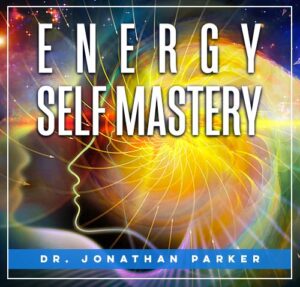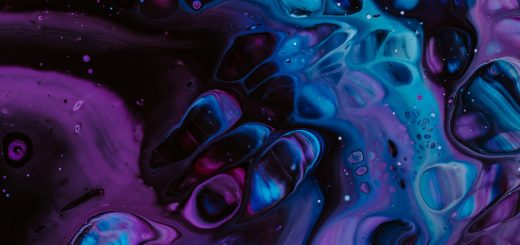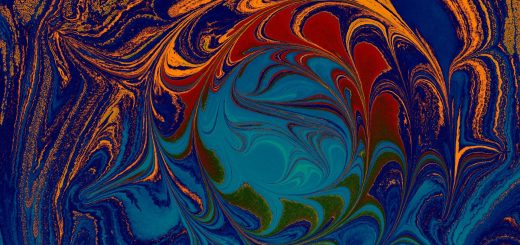How To Use Energy Techniques For Deep Relaxation

Before diving in, please note: This post is for informational purposes only. If you’d like to know more about how we approach topics, feel free to check out our friendly Disclaimer Page.
Hey there, amazing readers! 🖐️ Just a quick note: yes, we know there are a lot of ads here. Trust us, we get it—it’s not the prettiest look, but they help us keep this blog alive and kicking. Those pesky little ads cover the costs of all the behind-the-scenes magic, from hosting and tech stuff to creating content we hope you’ll love.
We’re committed to delivering quality posts, and your support (even just sticking around despite the ads) means everything to us. So, bear with us, and thanks for helping us keep the good vibes rolling. Now, on to the fun stuff! 😉
TRANSLATE BUTTON AT THE END OF THE ARTICLE
A Quick Overview
In our fast-paced world, finding moments of deep relaxation can feel like searching for a needle in a haystack.
Stress and anxiety seem to be constant companions, making it challenging to unwind.
Luckily, energy techniques can be a game-changer.
These methods not only help us relax but also create a harmonious balance in our bodies and minds.
In this article, we’ll explore how to harness the power of energy techniques for profound relaxation.
So grab a comfy chair, a cup of herbal tea, and let’s dive into this soothing journey together!
Understanding Energy Techniques for Relaxation
Energy techniques are all about tapping into the body’s natural energy fields.
Think of your body as a vibrant ecosystem.
When everything flows smoothly, we feel good.
But when there’s a blockage—due to stress, emotions, or even physical strain—our energy can get stuck, leading to discomfort and anxiety.
These techniques help us clear those blockages, promoting relaxation and a sense of well-being.
One common energy technique is Reiki, a Japanese practice that involves channeling energy to promote healing.
It’s like giving your body a gentle nudge back to balance.
Then there’s acupuncture, which uses fine needles to stimulate specific points on the body.
It may sound intimidating, but many swear by its relaxing effects.
Another fascinating method is EFT (Emotional Freedom Techniques), often called tapping.
This involves tapping on meridian points while focusing on a specific issue.
It’s surprisingly effective and can be done anywhere—no special equipment required!
Understanding these methods can help you find what resonates with you.
We’re all unique, so it’s essential to explore different techniques.
What works wonders for one person might not for another, and that’s perfectly okay!
The goal is to discover what makes your heart sing and your mind relax.
The Benefits of Deep Relaxation for Your Wellbeing
Deep relaxation isn’t just a luxury; it’s a necessity.
When we allow ourselves to relax deeply, we reap numerous benefits that can transform our lives.
First and foremost, relaxation reduces stress.
Chronic stress can lead to a host of health issues, from headaches to heart problems.
Taking time to relax can help mitigate these risks.
Another remarkable benefit is improved sleep.
I can’t stress enough how deeply relaxation can enhance our sleep quality.
When my mind is calm, I drift off much easier, waking up refreshed and ready to tackle the day.
Deep relaxation also enhances mental clarity.
Master your Energy and Awaken Your Spirit – start your journey here.
Have you ever noticed that after a good relaxation session, your thoughts seem clearer?
It’s as if the fog has lifted, allowing creativity and productivity to flow freely.
Moreover, it can strengthen our immune system.
When we’re relaxed, our bodies can focus on healing rather than survival.
This shift can lead to improved overall health and well-being.
Let’s not forget emotional benefits!
Deep relaxation can foster a greater sense of joy and contentment.
It helps us connect with our inner selves, revealing what truly matters to us.
Imagine feeling lighter and more centered—it’s a beautiful feeling!
In a nutshell, deep relaxation is a foundation for physical, mental, and emotional health.
It’s about nurturing ourselves and allowing our bodies to rejuvenate.
Who doesn’t want to feel more vibrant and alive?
Exploring Different Energy Healing Methods Today
The beauty of energy healing is its diversity.
There’s something for everyone!
Let’s look at a few methods that can help you on your relaxation journey.
Reiki: As mentioned earlier, Reiki is about channeling energy.
Practitioners lightly touch or hover their hands over your body, promoting relaxation.
Even if you’re skeptical, many people report feeling a sense of peace after a session.
Acupuncture: This ancient Chinese practice involves inserting thin needles into specific points to balance energy flow.
It may sound intimidating, but many find it surprisingly relaxing.
Just be sure to visit a certified professional.
EFT (Emotional Freedom Techniques): Tapping is a favorite of mine.
By tapping on specific points while voicing your feelings, you can release emotional blockages.
It’s like a little mental reset button!
Qigong: This is a movement-based practice combining gentle exercise, breathing, and meditation.
I personally enjoy it for its fluidity and calming effect on my mind and body.
Sound Healing: Using instruments like singing bowls or gongs, sound therapy can induce deep relaxation.
The vibrations resonate with your body, helping to release tension.
Just listening can be a transformative experience.
Crystal Healing: Some people use crystals to balance energy fields.
Crystals like amethyst and rose quartz are believed to promote relaxation.
You can place them around your space while you unwind.
Guided Imagery: This technique involves visualizing peaceful scenes to promote relaxation.
It’s like taking a mini-vacation in your mind!
Breathwork: Focusing on your breath can enhance relaxation.
Various breathing techniques can calm the mind and body, helping you feel more centered.
Yoga: Combining movement, breathing, and meditation, yoga is a holistic practice that nurtures relaxation.
Whether you prefer gentle or more vigorous styles, there’s a type for everyone.
Massage Therapy: Although not strictly an energy technique, massages can help release physical tension, leading to deeper relaxation.
Treat yourself to a regular session!
Master your Energy and Awaken Your Spirit – start your journey here.

Each method offers a unique pathway to relaxation, and trying various techniques can be an enjoyable adventure.
Experiment and see what resonates with you!
Preparing Your Space for a Relaxation Session
Your environment plays a crucial role in how relaxed you feel.
Creating a soothing space can make all the difference.
Here are some tips to help you prepare your sanctuary:
Choose a Quiet Location: Find a spot in your home where you won’t be disturbed.
Silence is golden during relaxation.
Declutter: A tidy space fosters a calm mind.
Clear away distractions and create a serene atmosphere.
Lighting: Dim lighting can enhance relaxation.
Use soft lamps or candles to create a warm glow.
Comfortable Seating: Whether it’s a cozy chair or a yoga mat on the floor, make sure you have a comfortable place to sit or lie down.
Aromatherapy: Scents can significantly impact our mood.
Use essential oils like lavender or chamomile in a diffuser to fill the air with calming aromas.
Soothing Sounds: Consider soft background music or nature sounds.
They can help set the tone for relaxation.
Personal Touches: Add items that bring you joy—like photos, plants, or art.
Surrounding yourself with things you love can create a comforting environment.
Temperature Control: Ensure the space is at a comfortable temperature.
A cozy setting can enhance your sense of well-being.
Blankets and Pillows: Having soft blankets and pillows can make your space inviting.
Wrap yourself in comfort!
Mindfulness Reminders: Place quotes or affirmations around your space to inspire mindfulness and positivity.
Preparation is key to an effective relaxation session.
By creating a cozy and inviting space, you can set the stage for a rejuvenating experience.
Breathing Techniques to Enhance Your Energy Flow
Breathing is a powerful tool for relaxation.
It’s something we do automatically, but when we focus on our breath, it can bring us a sense of calm.
Here are some techniques I find helpful:
Deep Belly Breathing: Place one hand on your chest and the other on your belly.
Inhale deeply through your nose, allowing your belly to expand.
Exhale slowly through your mouth.
This technique calms the nervous system.
4-7-8 Breathing: Inhale for a count of 4, hold for 7, and exhale for 8.
This technique can help reduce anxiety and promote relaxation.
Box Breathing: Inhale for 4 counts, hold for 4, exhale for 4, and hold for another 4.
This method is excellent for grounding yourself.
Nasal Breathing: Inhale deeply through one nostril while closing the other.
Switch nostrils and exhale.
This can balance your energy and promote tranquility.
Ocean Breathing: Inhale deeply and exhale while making a “ha” sound, like ocean waves.
This not only relaxes you but can also be fun!
Sitali Breathing: Roll your tongue and inhale through your mouth, then exhale through your nose.
This cooling breath can be refreshing and calming.
Counting Breaths: Simply count each inhale and exhale up to ten.
If your mind wanders, start again at one.
This practice helps improve focus and calm the chatter in your mind.
Guided Breath: Follow along with a guided meditation focused on breathing.
Many apps and online resources are available to help you with this.
Affirmation Breathing: As you inhale, think of a positive affirmation.
Exhale any negativity.
This technique combines breath with mindset, enhancing relaxation.
Practice Regularly: Just as with any skill, the more you practice, the easier it becomes.
Incorporate breathing exercises into your daily routine for maximum benefit.
Breathing techniques are simple yet powerful.
They can be done anywhere, anytime—so why not give them a try?
Guided Imagery: A Journey to Inner Peace
Guided imagery is like taking a mental vacation.
It involves visualizing calming scenes to promote relaxation.
Here’s how to get started:
Find a Quiet Spot: Sit or lie down in a comfortable position, closing your eyes to minimize distractions.
Take a Few Deep Breaths: Start with some deep belly breathing to relax your body.
Choose Your Scene: Imagine a peaceful place—like a beach, forest, or meadow.
The more detailed, the better!
Picture the colors, sounds, and smells.
Engage Your Senses: Feel the warmth of the sun, hear the waves crashing, or smell the fresh pine.
Engaging your senses deepens the experience.
Stay Present: Allow your mind to explore this scene.
If thoughts pop up, gently guide them back to your peaceful place.
Duration: Spend 5-15 minutes in this visualization.
Set a timer if needed.
Close Gently: When you’re ready, slowly bring your awareness back to the present.
Wiggle your fingers and toes, and open your eyes.
Reflect: Take a moment to notice how you feel.
Carry that sense of peace with you.
Practice Regularly: The more you practice, the more effective it becomes.
Make guided imagery a part of your relaxation routine.
Use Apps or Recordings: If you find it challenging to initiate on your own, consider using apps or recordings.
Many offer guided sessions to help ease you into relaxation.
Guided imagery can transport you to a tranquil place, helping to melt away stress and anxiety.
It’s a fantastic technique for anyone looking to cultivate inner peace.
Incorporating Meditation for Deep Relaxation
Meditation is another powerful tool for relaxation.
It encourages mindfulness and deepens our connection with ourselves.
Here’s how to get started with meditation:
Choose a Comfortable Position: Sit or lie down comfortably.
You can use a chair, a cushion, or even lie flat on your back.
Set a Time: Start with just 5-10 minutes and gradually increase as you become more comfortable.
Setting a timer can help you focus.
Focus on Your Breath: Begin by taking deep breaths.
Notice the rise and fall of your chest.
Allow your breath to become natural.
Clear Your Mind: As thoughts arise, acknowledge them but let them drift away.
Don’t engage with them; observe and release.
Use Guided Meditations: If you’re new, consider guided meditations.
These can provide structure and keep you on track.
Body Scan: Focus on each part of your body, relaxing as you go.
Start from your toes and work your way up, noticing any tension.
Anchor Your Attention: You can focus on your breath, a mantra, or even a visual object.
This practice helps anchor your mind and prevent distraction.
Practice Mindfulness: Bring your awareness to the present moment.
Notice sounds, sensations, or smells without judgment.
Consistency is Key: Aim to meditate daily.
Even a few minutes can have a profound impact over time.
Reflect on Your Experience: After each session, take a moment to reflect on how you feel.
Notice any changes in your mood or stress level.
Meditation creates space for deep relaxation and self-exploration.
It’s a wonderful way to connect with yourself and let go of the day’s stressors.
The Power of Visualization in Energy Healing
Visualization is not just for guided imagery; it’s a potent tool in energy healing.
Here’s how to harness its power:
Set Your Intention: Before you start, clarify your intention.
What do you want to achieve?
Relaxation, healing, clarity?
Get Comfortable: Find a quiet place, close your eyes, and take a few deep breaths to center yourself.
Visualize Energy Flow: Imagine energy flowing through your body.
Picture it as a warm, glowing light that brings healing and relaxation.
Color Imagery: Different colors resonate with various energies.
For example, visualize a calming blue light washing over you to promote peace.
Release Tension: As you visualize, imagine any tension or negativity leaving your body.
It’s like watching smoke dissipate into the air.
Connect with Your Body: Focus on areas that feel tense or uncomfortable.
Visualize healing energy enveloping those spots, promoting relaxation.
Use Symbols: If you resonate with specific symbols or images, incorporate them into your visualization.
This could be anything from butterflies to trees—whatever brings you comfort.
Affirmations: Combine visualization with positive affirmations.
As you visualize, repeat affirmations that align with your intention (e.g., "I am calm and relaxed").
Practice Regularly: Like any technique, the more you practice, the more effective it becomes.
Dedicate time each day to visualize and connect with your energy.
Reflect on Changes: After your sessions, notice how you feel.
Consistent practice can lead to profound shifts in your emotional and physical state.
Visualization can unlock the door to deeper relaxation and healing.
It’s a wonderful way to tap into your body’s innate wisdom and power.
Using Sound Therapy for Deeper Relaxation
Sound therapy can be a beautiful addition to your relaxation toolkit.
Here’s how to use sound to enhance your experience:
Choose Your Instruments: Instruments like singing bowls, chimes, or gongs can create calming vibrations.
Choose what resonates with you.
Create a Playlist: If you don’t have instruments handy, create a playlist of soothing music or nature sounds.
There are plenty of resources available online.
Set the Scene: Find a quiet space, dim the lights, and make yourself comfortable.
Allow the sound to wash over you.
Focus on the Sound: As you listen, focus on the sounds and vibrations.
Let yourself be fully present in the experience.
Attend Sound Baths: Consider participating in a local sound bath if available.
These group sessions can be incredibly relaxing and immersive.
Use Headphones: Listening to sound therapy through headphones can enhance the experience.
It allows you to fully immerse in the sound.
Experiment with Tuning Forks: Tuning forks can promote relaxation and healing through sound vibrations.
They’re surprisingly effective!
Breathe with the Sound: Synchronize your breath with the rhythm of the sounds.
This can deepen your relaxation and enhance the experience.
Combining Techniques: Incorporate sound therapy with other relaxation techniques, like meditation or guided imagery.
The combination can lead to powerful results.
Reflect on the Experience: After your session, take a moment to notice how you feel.
Sound therapy can evoke deep emotional responses, so pay attention to any shifts in your mood.
Sound therapy can be a beautiful way to enhance your relaxation practice.
The vibrations can help clear energetic blockages and promote a sense of peace.
Gentle Movement Practices to Release Tension
Incorporating gentle movement into your relaxation routine can be incredibly beneficial.
Here are some practices to consider:
Yoga: Gentle yoga can help release physical tension.
Focus on restorative poses that promote relaxation.
Tai Chi: This gentle martial art emphasizes slow, flowing movements.
It’s an excellent way to connect with your body and promote relaxation.
Stretching: Simple stretching can relieve tension in tight muscles.
Focus on areas that often hold stress, like the neck and shoulders.
Dance: Letting loose and dancing to your favorite tunes can be a fun way to release energy and stress.
It’s about moving freely, so don’t hold back!
Walking in Nature: A leisurely walk can do wonders for relaxation.
The sights and sounds of nature can calm the mind.
Qigong: This gentle practice combines movement, breath, and meditation.
It’s excellent for promoting relaxation and energy flow.
Foam Rolling: Using a foam roller can release muscle tension.
It’s a little uncomfortable at first, but the relief afterward is worth it!
Body Scan: As you move, pay attention to different parts of your body.
Notice where you hold tension and consciously relax those areas.
Mindful Movement: Engage in activities like slow walking or simple stretches, focusing on your breath and movements.
Consistency: Like any practice, consistency is key.
Incorporate gentle movement into your daily routine for best results.
Gentle movement can complement your relaxation techniques beautifully.
It helps release physical tension while promoting a sense of calm.
Simple Energy Techniques You Can Try at Home
Ready to explore energy techniques but unsure where to start?
Here are some simple methods you can try at home:
Grounding Exercise: Stand barefoot on the ground and imagine roots extending from your feet into the earth.
Feel the stability and energy flowing up.
EFT Tapping: Tap on specific meridian points while focusing on a particular issue or emotion.
This technique is easy, effective, and can be done anywhere.
Breath of Fire: This energetic breathing technique involves rapid inhalations and exhalations.
It can help clear energy blockages.
Affirmation Journaling: Write down positive affirmations focused on relaxation and well-being.
Repeat them daily for a powerful shift in mindset.
Crystal Placement: Place calming crystals like amethyst or rose quartz around your space.
Their energy can enhance your environment.
Visualization: Spend a few minutes each day visualizing your energy flowing freely throughout your body.
Picture any blockages dissolving.
Essential Oils: Use calming essential oils like lavender in a diffuser or during your relaxation practice.
The scent can create a tranquil atmosphere.
Sound Meditation: Listen to calming music or sound therapy.
Focus on the vibrations, allowing them to wash over you.
Mindful Walking: Take a slow, mindful walk, focusing on the sensations in your body and the environment around you.
It’s a grounding practice.
Daily Gratitude: At the end of each day, write down three things you’re grateful for.
This practice can create a positive mindset and enhance relaxation.
These techniques are accessible and can be easily woven into your daily life.
Experiment and see what resonates with you!
Creating a Consistent Relaxation Routine for Success
Consistency is vital when it comes to relaxation.
Establishing a routine can help you integrate these techniques into your life.
Here’s how to create a successful relaxation practice:
Set Aside Time: Block off specific times in your calendar for relaxation.
Treat these moments as appointments with yourself.
Start Small: Begin with just a few minutes each day.
Gradually increase the time as you become more comfortable.
Create a Ritual: Develop a calming pre-relaxation ritual.
It could be lighting a candle, brewing herbal tea, or playing soft music.
Be Flexible: Life can be unpredictable.
If you miss a day, don’t be hard on yourself.
Just pick up where you left off.
Variety is Key: Incorporate different techniques to keep things fresh and engaging.
Try alternating between meditation, sound therapy, and movement practices.
Track Your Progress: Keep a relaxation journal to note how you feel after each session.
Tracking progress can motivate you to continue.
Join a Community: Consider joining a class or group focused on relaxation techniques.
Sharing experiences can be incredibly motivating.
Listen to Your Body: Pay attention to what your body needs each day.
Some days may call for deep relaxation, while others might invite gentle movement.
Incorporate Mindfulness: Practice mindfulness throughout your day.
Slow down and savor the little moments.
Celebrate Your Progress: Acknowledge your commitment to relaxation.
Celebrate your successes—no matter how small!
Creating a consistent relaxation routine can help you cultivate a more peaceful and fulfilling life.
It’s about finding what works for you and prioritizing your well-being.
Conclusion
Using energy techniques for deep relaxation can be a transformative journey.
By understanding different methods, preparing your space, and establishing a consistent routine, you can create a sanctuary within yourself.
Remember, relaxation isn’t just a luxury; it’s a necessity for our overall well-being.
So, let’s embrace these techniques and make relaxation a priority in our lives.
After all, we all deserve moments of peace and tranquility in this busy world!

The Enlightenment Journey is a remarkable collection of writings authored by a distinguished group of experts in the fields of spirituality, new age, and esoteric knowledge.
This anthology features a diverse assembly of well-experienced authors who bring their profound insights and credible perspectives to the forefront.
Each contributor possesses a wealth of knowledge and wisdom, making them authorities in their respective domains.
Together, they offer readers a transformative journey into the realms of spiritual growth, self-discovery, and esoteric enlightenment.
The Enlightenment Journey is a testament to the collective expertise of these luminaries, providing readers with a rich tapestry of ideas and information to illuminate their spiritual path.
Our Diverse Expertise 🌟
While our primary focus is on spirituality and esotericism, we are equally passionate about exploring a wide range of other topics and niches 🌍📚. Our experienced team is dedicated to delivering high-quality, informative content across various subjects ✨.
To ensure we provide the most accurate and valuable insights, we collaborate with trusted experts in their respective domains 🧑🏫👩🏫. This allows us to offer well-rounded perspectives and knowledge to our readers.
Our blog originally focused on spirituality and metaphysics, but we’ve since expanded to cover a wide range of niches. Don’t worry—we continue to publish a lot of articles on spirituality! Frequently visit our blog to explore our diverse content and stay tuned for more insightful reads.







